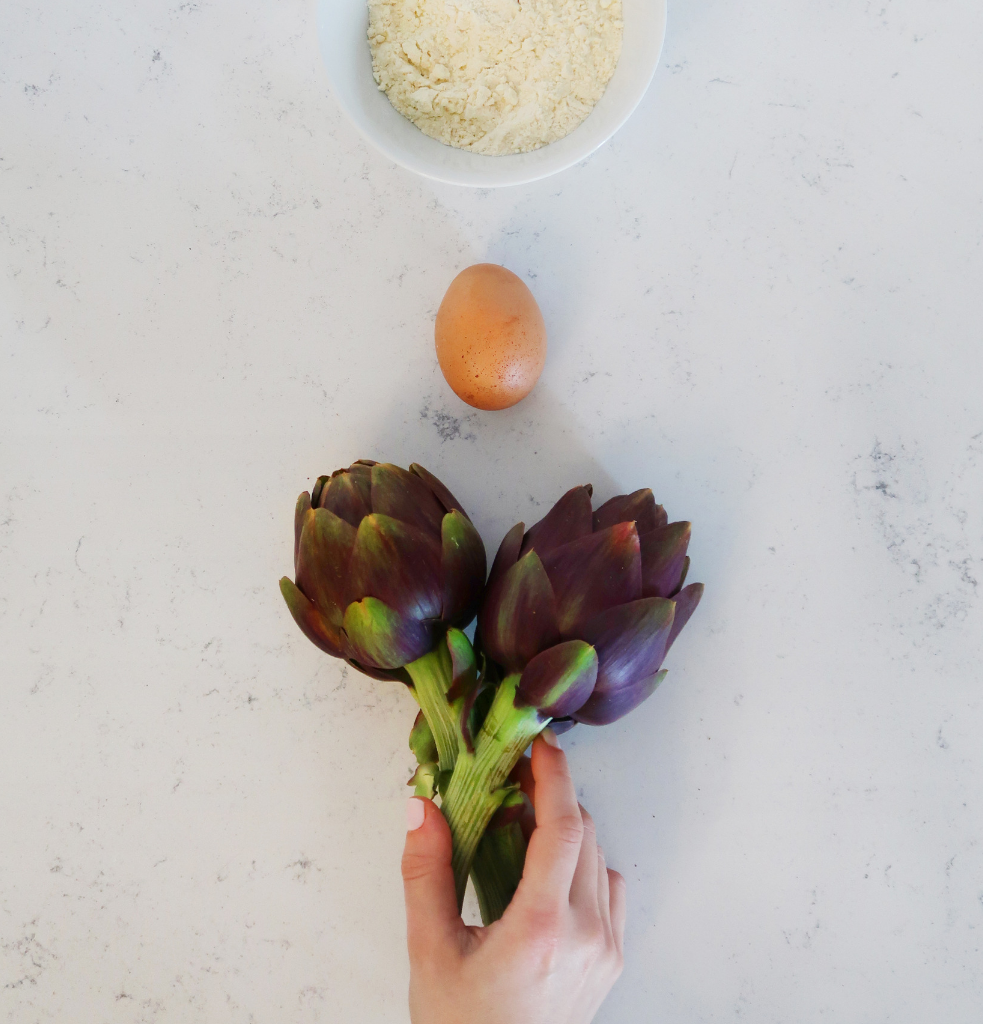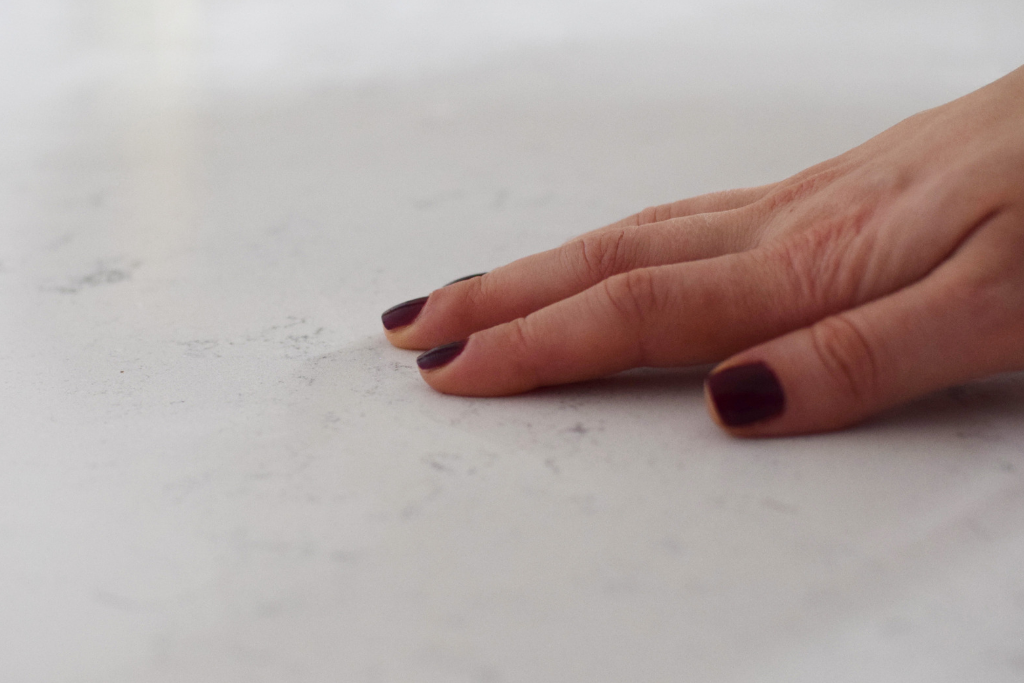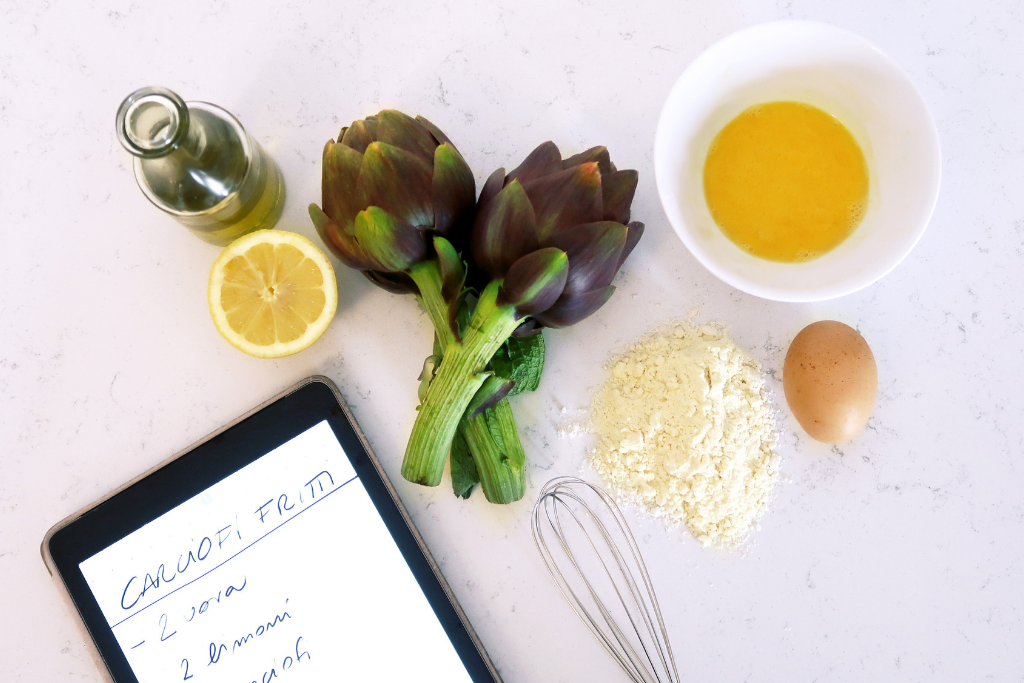“The tender-hearted artichoke dressed in its armour
built its modest cupola and stood erect
impenetrable beneath a lamina of leaves.
Around it, maddened vegetables, ruffling their leaves, contrived creepers, cat tails”.
Analogies are sought and unions created in the kitchen. Balanced flavours, smells, contrasts and bright colours: we use our kitchen worktops as if they were an artist’s palette or the blank pages of poets ready to be filled with verses. When we mix ingredients or when we place them in a pot, we transform raw materials, creating new culinary characters. Colours and shapes are modified, smells become more intense and textures change. The kitchen remains the unaltered backdrop of these variations, a friendly onlooker of the works in progress.

The traces of prepping on our kitchen worktops are swept away with the wipe of a sponge and so our theatre of taste is ready to welcome new ensembles. The tactile creation of a kitchen worktop is in itself a recipe using high quality ingredients. Imagine quartz sand that is mixed with doses of synthetic resins to create a quartz agglomerate: a hard item, the result of a “cooking process”. Agglomerates for kitchen worktops seem cold and resistant, but their creation is a tale of blending sand and resins, seasoned with cutting-edge technology.


Also the Ode to the Artichoke by Pablo Neruda is about appearance and perception. The poet describes it as a vegetable with a protective armour and a knightly heart, extols its uniqueness and beauty compared to other restless vegetables around it. As it touches my Santamargherita kitchen worktop, the artichoke becomes aware of itself again, and stands dignified and elated. No longer just a vegetable, it strikes a flower pose and parties with the flour and eggs in my pan.

The taste of an artichoke certainly cannot be photographed, but a quality kitchen worktop ensures we enjoy preparing every dish. My recipe is now ready to be served.
Camilla Bellini
